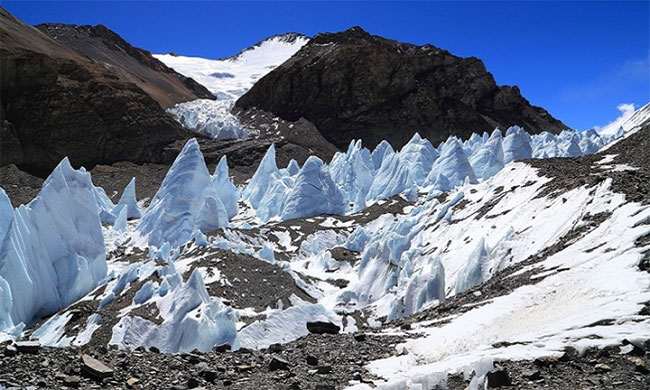Researchers predict that the Qinghai-Tibet Plateau will face significant impacts from melting permafrost, including subsidence, erosion, and desertification.

Qinghai-Tibet Plateau in the Himalayas. (Photo: CAS Newsletter).
The melting of permafrost on the Qinghai-Tibet Plateau, part of the Himalayas, is occurring at twice the global average rate in recent decades, posing a serious threat to the stability of local infrastructure. According to a study published in October in the journal Nature Communications Earth & Environment, this melting leads to increased demands for the repair and replacement of infrastructure. It is estimated that by 2050, 38% of roads, 39% of railways and power lines, and 21% of buildings will be threatened by melting ice.
The Qinghai-Tibet Plateau spans over 2.5 million square kilometers, roughly five times the land area of France, extending from western China to Pakistan and encompassing regions of Nepal, eastern India, Tajikistan, and southern Kyrgyzstan. Due to the effects of climate change that are raising global temperatures, permafrost around the world is beginning to melt at a rapid pace. The ground is becoming less stable and more prone to movement. Many areas are experiencing significant subsidence, creating sinkholes on roadways, impacting airports, railway tracks, pipelines, and even homes, according to Mathieu Morlighem, a professor of Earth Sciences at Dartmouth College.
In the final stages of the melting process, water loss in the soil will reach levels that cause lakes to dry up quickly. Observations from satellites and on the ground indicate that this trend is expanding throughout the permafrost regions of the Northern Hemisphere, including the Qinghai-Tibet Plateau.
Specifically, on the Qinghai-Tibet Plateau, meltwater from permafrost, glaciers, and high-altitude freshwater lakes feeds into the three longest rivers in Asia, which are the main water source for approximately 20% of the world’s population. Moisture from high-altitude lakes and springs also helps sustain the semi-arid grassland ecosystem. If permafrost and glaciers continue to melt, rivers across the plateau will begin to run dry, contributing to soil erosion and ultimately leading to desertification. Desertification can reduce rainfall and snowfall, further diminishing water supplies.

















































